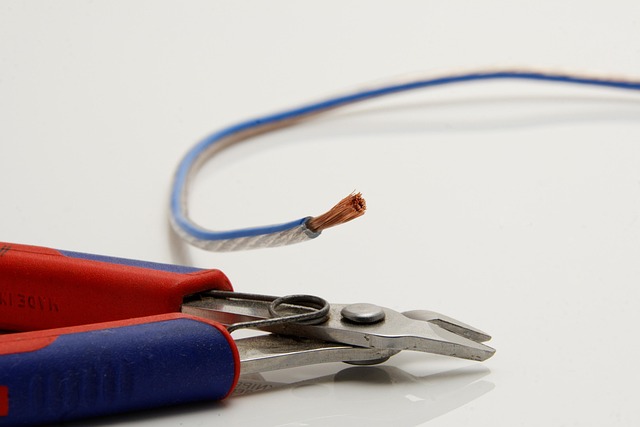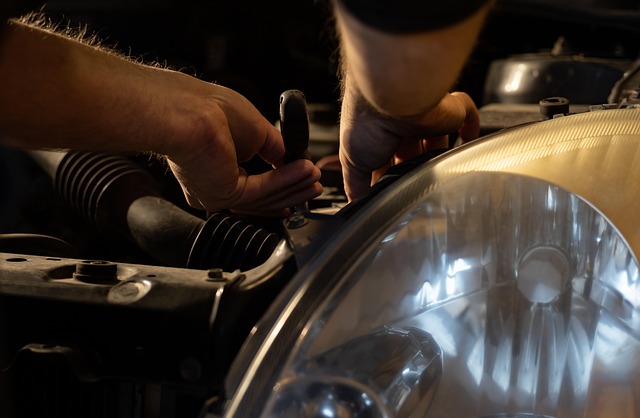An ultrasonic thickness gauge is a critical tool in automotive repair, enabling non-destructive testing and precise measurements of metal thickness. These gauges help detect hidden damage, such as dents or delaminations, ensuring high-quality repairs. In collision centers, they're invaluable for assessing complex damages, especially on models like Mercedes Benz. However, their application is mainly limited to metals, and a balanced approach with other evaluation methods is necessary for comprehensive damage assessment across various vehicle types.
An ultrasonic thickness gauge is a powerful tool in the automotive repair arsenal, offering precise measurements and insights into vehicle damage diagnosis. This non-invasive device utilizes high-frequency sound waves to determine material thickness, enabling technicians to assess structural integrity and identify hidden issues. From detecting panel deformities and corrosion to evaluating crash damage, this article explores when and how ultrasonic thickness gauges are invaluable assets in modern automotive repair shops, highlighting their benefits and limitations.
- Understanding Ultrasonic Thickness Gauges: Their Function and Benefits in Vehicle Damage Diagnosis
- When to Employ an Ultrasonic Thickness Gauge: Use Cases in Automotive Repair
- Advantages and Limitations: Evaluating the Efficacy of Ultrasonic Thickness Gauges for Vehicle Damage Assessment
Understanding Ultrasonic Thickness Gauges: Their Function and Benefits in Vehicle Damage Diagnosis

An ultrasonic thickness gauge is a powerful tool used in vehicle damage diagnosis, offering accurate and non-destructive measurements. It works by transmitting high-frequency sound waves through a material, such as a car’s body panel, and measuring the time it takes for the wave to return. This technology is particularly beneficial in collision repair centers and auto collision centers where assessing damage to vehicles quickly and efficiently is crucial.
These gauges provide several advantages in car paint repair scenarios. They can detect even the slightest variations in metal thickness, helping technicians identify hidden dents or delaminations that might go unnoticed during a visual inspection. By utilizing this technology, professionals at these facilities can ensure precise repairs, enhancing the overall quality of their work. Moreover, ultrasonic thickness gauges are versatile and can be applied to various materials, making them invaluable assets for any modern workshop.
When to Employ an Ultrasonic Thickness Gauge: Use Cases in Automotive Repair

In the realm of automotive repair, an ultrasonic thickness gauge stands as a versatile tool for assessing vehicle damage, particularly in the context of auto collision repair and vehicle bodywork restoration. Employing this technology is pivotal when dealing with complex or subtle damages that might not be immediately apparent through visual inspection alone. Its non-destructive nature allows technicians to accurately measure the thickness of various components, such as panels, bezels, and bodies, without causing further harm.
This gauge finds its true utility in scenarios where precision is paramount. For instance, after a minor fender bender or during pre-and post-repair assessments, it facilitates a thorough understanding of the extent of vehicle damage. Moreover, specialized auto collision repair workshops can leverage this tool to ensure that replacement parts adhere to manufacturer specifications, thereby guaranteeing optimal structural integrity and safety in the event of future collisions.
Advantages and Limitations: Evaluating the Efficacy of Ultrasonic Thickness Gauges for Vehicle Damage Assessment

Ultrasonic thickness gauges offer several advantages when it comes to vehicle damage diagnosis. One of their key strengths is non-destructive testing, allowing mechanics and auto body shops to assess panel thickness without causing further damage or requiring disassembly. This feature is particularly beneficial for delicate tasks such as Mercedes Benz repair, where preserving the original integrity of the vehicle is paramount. Additionally, these gauges provide quick and accurate measurements, streamlining processes in both auto collision repair and general auto body shop operations, and saving time that can be allocated to more complex repairs.
Despite their advantages, ultrasonic thickness gauges are not without limitations. They primarily measure metal thickness, making them less effective for evaluating damage to non-metallic components or composite materials commonly found in modern vehicles. Moreover, the accuracy of these measurements heavily relies on factors like operator skill and the gauge’s calibration, requiring regular maintenance to ensure efficacy. Therefore, while ultrasonic thickness gauges are a valuable tool in an auto body shop’s arsenal, they should be used judiciously alongside other damage assessment methods for a comprehensive evaluation, especially when dealing with varied vehicle models or complex auto collision repair scenarios.
An ultrasonic thickness gauge is a powerful tool for vehicle damage diagnosis, offering non-destructive and accurate measurements. Its ability to quickly assess panel integrity makes it an essential addition to automotive repair shops, especially for complex or subtle damage. By understanding the benefits and limitations outlined in this article, professionals can effectively incorporate ultrasonic thickness gauges into their diagnostic routines, ensuring precise and efficient repairs.














